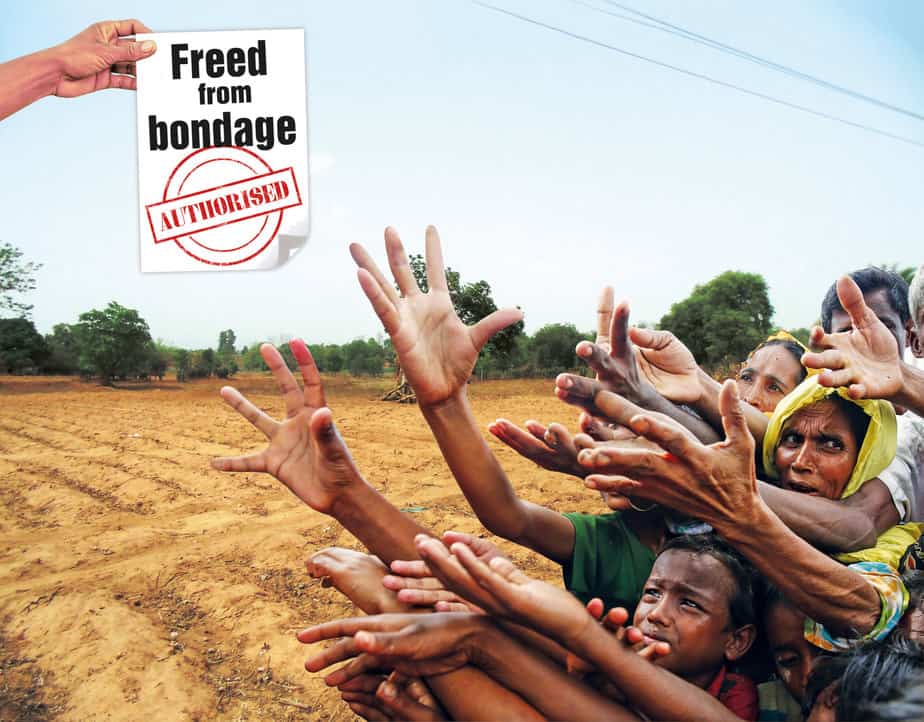They have been freed from bondage but the administration is in no hurry to give them the release certificates that would free them of debt and get them back on their feet
There are approximately 18 million people in India living and working without freedom of movement, abused, and on miserably low wage.
The 81 persons recently freed from this modern-day slavery from Telangana’s Rangareddy district, all hail from Odisha, a major source state of migrant, bonded labour. The brick kiln factory they left their homes for was the promise of a job which would pay them enough to pay off their debt — the advance given by the middleman — plus earn enough to live by and save. While it sounded like a great opportunity, this belief didn’t last very long.
A couple of months into the job, when all the promises were flouted, they sought help. It came almost two months later on April 16 this year, after all evidence of bonded labour was gathered. However, this doesn’t mean that the administration is convinced, as none of the survivors have received their release certificates (RC). A little confusing, as the rescue was carried out with the help of the state labour department, coordinated by the commissioner of labour with the district commissioner of Rangareddy — obviously after a gathering evidence of systematic abuse.
The problem here lies with the “ambiguity” of power, as Varsha Bhargavi, State Coordinator in the Labour Department for Telangana puts it. She tells Patriot that while the nodal agency to look into the cases of bonded labour in Telangana is the labour department, the revenue department holds the key to the survivors receiving the release certificate.
The RC is a crucial document to confirm that there was a situation of bondage and that “now, the debt is waved off”. It furthermore “builds a stronger case in various laws like the SC/ST Act, which most of the labourers fall under,” says Bhargavi. But she says that, ironically most of the revenue department tasked with the job are from the upper caste “who fail to see the oppression”.
It’s imperative, Bhargavi adds, for the sensitisation of officials. She also points to the need for coordination between different departments “which is time consuming, and thus delays the process for the rescue.” This means, “Many times, the employer and the trade union association will get a whiff of it”
Narasingha Mishra, MLA of Bolangir and Opposition leader in the Odisha Legislative Assembly accuses the destination state (here Telangana) of forcing workers to come back to their home state “to starve and die”. He asks, “If they don’t have release certificates, what will they do in Bolangir? Suppose they have taken an advance, how will they face their creditors?”
The RC is therefore a critical document which ensures that neither the middleman nor the owner will be able to ask for the sum back, giving the rescued labourer some surety of security when he/she returns. The RC also means the person would get the initial rehabilitation amount of R20,000.
In the cases we encountered, families were finding it hard to find a job, almost four weeks after their rescue, and had no money to fall back on.
This also means that they may easily get recruited again. In the villages Patriot went to, there is an extreme dearth of jobs, road construction is often at a standstill, the fields are powder-dry and hopelessness hangs like a haze over the countryside. Survivors point to lack of opportunity, but are adamant they will never again go to work outside the state. However, if they do, they won’t be the first to do so.
An RC is also significant as it can be used as an identification card. Bhargavi says they have encountered “fake Aadhaars”. Many children, she says, have Aadhaars with fake date of birth (DOB). In one case, “I have interviewed 17 boys who turned out to be all below 18.” Incidentally, all of the 17 DOBs were written as January 1.
But not just a real identification, the RC will give the survivor a better chance of obtaining government schemes like MGNREGA, Indira Gandhi housing scheme, and others meant for below poverty line families. One man we met, who didn’t have his RC, accused officials of demanding R700 from him for a job card.
So, what’s keeping the authorities from giving this basic respite, under the Bonded Labour Abolition Act of 1976?
Human rights organisations dealing with bonded labour blame mostly the authorities’ apathy towards the survivors — along with the disdain for extra paperwork and foot-dragging over disbursement of funds.
Furthermore, RCs are evidence of high number of bonded labourers in the region, which many don’t want to accept.
Mishra believes it’s to do with the “social philosophy of the government and administrator”. “If the government is pro-poor it (the issuance of RC) wouldn’t be a problem but see, in the case of an anti-poor government, instances like these would take place.”
Bhargavi notes that while on one hand “We know that slavery and debt bondage is a reality, right now it’s a hidden thing”, almost something society has not accepted takes place persistently. “We have people from Odisha and Bihar coming in droves.”
The conditions of the 81 persons rescued a month ago, 38 are men, 28 women and 15 children. Out of the 15 children, five were made to work, the other 10 deemed too young even by the brick kiln bosses.
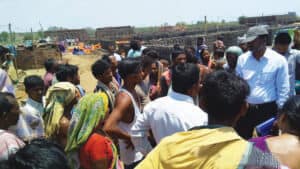
The men and women toiled for 20 hours a day. The treacherously long shift started at three in the morning and stretched till one in the afternoon, followed by a two-hour break, after which they would be expected to start work again at 3 pm till 1 am. This went on even after the workers sought help in the last week of February.
Tipoffs about mistreatment inside the brick kiln were given to the non-profit Foundation for Sustainable Development (FSD). The organisation has already received six complaints this year from the district of Rangareddy alone.
It took them approximately a month to confirm the accusation and move forward with the complaint to the state government on March 23, 2018. The government then took its own time for verification and the date for rescue was scheduled for April 14, 2018, which finally took place two days later.
Dr Kandasamy Krishnan, Executive Director of FSD, says his organisation is expected to do a thorough check and correlate evidence to show that there is bondage. Consequently, after the government is alerted, the time taken by its agencies many a time affects the rescue efforts. Krishnan accuses the owners and kingpins being alerted of such missions, with “the labour department having good relations with the employers” and even with “local MLAs”.
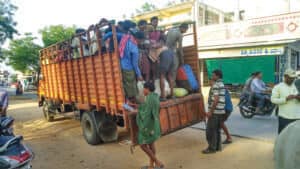
An example of the complexities of rescues and their aftermath is given by Bhargavi. With no interim homes for bonded labourers, the survivors would have to be placed in a guest house “and again for that we’ll have to get another set of okays. Then for the food, the district magistrate will have to write to the Centre to get the fund approved”. Ironically, it seems that the bureaucracy makes it harder for bonded labour to be rescued from slavery and rehabilitated, despite the existence of well-meaning laws.
The High Court of Tamil Nadu, Madhya Pradesh and Maharashtra had struck down Section 21 of the Bonded Labour System (Abolition) Act, 1976 saying it was a violation of Articles 14, 21, and 50, of the Constitution. The Section had conferred power to Revenue Divisional officers in the State to conduct trials. In all cases related to bonded labour, judicial magistrate courts in the three states were ordered to conduct trials instead. In the rest of the country, however, it would be the revenue divisional officers or Sub Divisional Magistrates.
The perpetuation of bonded labour is something that can be blamed on state actors as well as the Centre. The practice has also been able to thrive due to social evils: socio-economic disparity, casteism and dowry. Not to speak of cruelty and exploitative attitude of feudal elements.
Taking the example of Odisha, according to the 2011 census of India, 61.8% of the workforce is engaged in the agriculture sector — with many small and marginal farmlands depending on rainfall for irrigation, and with a history of drought in the country, the picture is grim.
In 2017, 70 blocks of 15 districts of Odisha, were declared as drought affected. A report titled “Drought in Odisha 2015-16 a Citizens’ Report on Impact of Drought and Alternatives for Mitigation”, highlighted the grave impact of climate change on the state. No less than 94% farmers of 38 villages in seven districts had been badly affected by the drought. This also led to farmers taking credit “from various private sources to meet the basic needs in the absence of the credit support by government.”
Hence, looking elsewhere is inevitable. Majority of cases that Bhargavi has encountered come from agrarian community, which marks the common ground of migrating to places like Telengana, “when you look at the socio-economic background, they are coming after facing the agrarian crisis and all the issues are interlinked”, she says.
The state government of Odisha had in October last year announced a special package of R134 crore for Bolangir and Nuapada districts to curb migration from these regions. Mishra says the promises have till date not been fulfilled. “Migration has not gone down, it has only increased. I don’t know what steps they (the state government and the Centre) have taken”. Whatever they have done, he adds, did not provide jobs — and where they did, workers are not paid. Patriot’s earlier visit to Odisha had found workers complaining of being paid three-four months after finishing their work under MGNREGA.
Mishra says the state government blamed the Centre for not releasing the funds, “but the law says the state government (here ruled by the BJD) is bound to pay, which can get reimbursed by the Centre.” However, this doesn’t take place, he says, with workers “serving and dying”.
The answer, he says, lies in cottage industries, food processing industries and even brick kilns opening in the state to be able to stop the migration.
Tale of two rescued families
Sanyujya Tandi left his home in the village of Kharlipathar with his wife Rina, taking along two of their children, 17-year-old Mamita and 15-year-old Babita. The wife, ailing with kidney disease, soon made her way back to their village in Bolangir district — a region steeped in poverty.
Despite the long hours, Sanyujya says, the factory owner was perpetually angry, hurling abuses at them, threatening them with sticks if they sat for a minute’s rest.
They were sold the dream of a better life, like many others. This dream seller, named Thetka, came from a village called Taula. Sanyujya was given R15,000 for each family member that would work, and was assured of R1,000 for 1,000 bricks made, in addition to R70 every day for food.
The family produced 15,000-20,000 bricks every week, and were paid a meagre amount of R1,500, sometimes even R900. “It was very difficult for my family to live off of that, sometimes I would ask for R50 but they never gave it to us”.
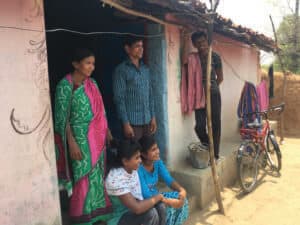
They were never allowed to go out, save for a day in the week to buy provisions, but even then, they were followed by at least four to five men, who ensured the labourers wouldn’t run away.
Now, their ordeal is over, but they have fresh worries to encounter.
When Patriot met the family, it had been 16 days since their homecoming and none of them had found work. Mamita, who has studied till 12th grade, has applied for a few jobs. While she expressed her desire to continue studying, the reality of her family’s situation does not leave her for a second. “My father works alone and we are four daughters and one son who have all been given education. It is difficult to pay for education and also run a home”, she says, her voice cracking and tears welling up in her eyes.
Government colleges are tens of kilometres away for which a journey up and down would mean a whole day of travel. This would mean living in a hostel, along with a fee, which they can’t afford.
***
Khiralal Bag and his wife Dusila left for Telangana, taking their two young children — a 9-year-old who was made to work alongside them, and another young son. Khiralal’s brother, his wife and grown nephews joined him in the factory.
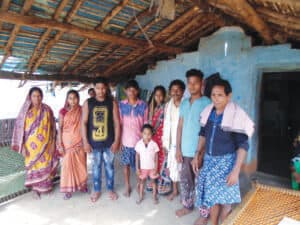
They had left their village Karlakatani with the middleman and boarded a train to Telangana. The two-day journey was a treacherous one, where they stood the whole way, without much to eat — incidentally this was also the way they were sent back to their village after the rescue. One chimed in saying, “Us labour people won’t get any reservation. People are treated like garbage.” At the station in Telangana they were met by the “seth”, called Don Shinu.
Shinu, they learnt, had taken the factory on rent from the owner. They say, this owner and a whole lot of others have a brick kiln association, which was used to mobilise forces when the rescue team reached the doorstep of the factory.
Labour officials were shoved, others threatened, the labourers beaten, until police arrived.
Shinu was always drinking, the survivors say, periodically sending a barrage of abusive words their way. What makes it certain that the practice of bonded labour is deeply entrenched is the fact that Shinu knows Oriya, and is able to interact with the labourers with ease.
The survivors spoke of the way they were constantly ridiculed and harassed. When the women would go to the makeshift homes to make lunch, generally rice and sometimes tomatoes, supervisors would enter the homes and watch them, abuse them, and pull them out to get back to work. “When at 1 pm we would go to eat lunch, they would come in an inebriated state and say all sort of profanities”, and when they wouldn’t react and do as they said, they would be beaten up.
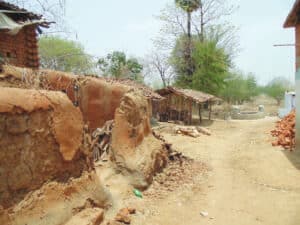
The women were even followed when they had to go to relieve themselves, the don’s people watching every move.
“We thought our family would live well, we would get money. We went because there’s no work here,” says one of Khiralal’s nephews. Now, they plan to take on daily wage work in the village, and work on agricultural land. Currently, their five acres, one for each brother, is arid, awaiting the rains. When and if they do get rains, they will cultivate paddy, and daal, and even beedi leaves. “This year, everything died,” added Khiralal.
Still, they are happy to be back home and say they’ll never go back, or migrate, no matter how difficult it gets in their homeland, or how tempting an offer is made by middlemen.
KNOW THE BILL
The Trafficking of Persons (Prevention, Protection and Rehabilitation) Bill, 2018, was approved by the union cabinet, and now lies in wait for its approval in the Parliament.
Civil society organisations have been pushing for the training and designating of officials with the authority to take up labour trafficking cases. There’s also a need for coordination of inter-State actors to be strengthened to be able to tackle trafficking.
A few important features of the Bill:
• Addresses prevention, rescue and rehabilitation.
• Includes aggravated forms of trafficking: for the purpose of forced labour, begging, trafficking of a woman or child for the purpose of marriage or under the pretext of marriage or after marriage etc.
• Punishment for promoting or facilitating trafficking of person.
• The confidentiality of victims/ witnesses and complainants by not disclosing their identity.
• Time bound trial and repatriation of the victims – within a period of one year from taking into cognizance.
• Immediate protection of rescued victims and their rehabilitation.
• Rehabilitation of the victim which is not contingent upon criminal proceedings being initiated against the accused or the outcome thereof.
• Rehabilitation Fund created for the first time. To be used for the physical, psychological and social well-being of the victim
• Designated courts in each district for the speedy trial of the cases.
• The Bill creates dedicated institutional mechanisms at District, State and Central Level. These will be responsible for prevention, protection, investigation and rehabilitation work related to trafficking.
• Punishment ranges from rigorous minimum 10 years to life and fine not less than R1 lakh.
• The Bill comprehensively addresses the transnational nature of the crime.
This report is part of NFI’s National Media Awards Programme.

